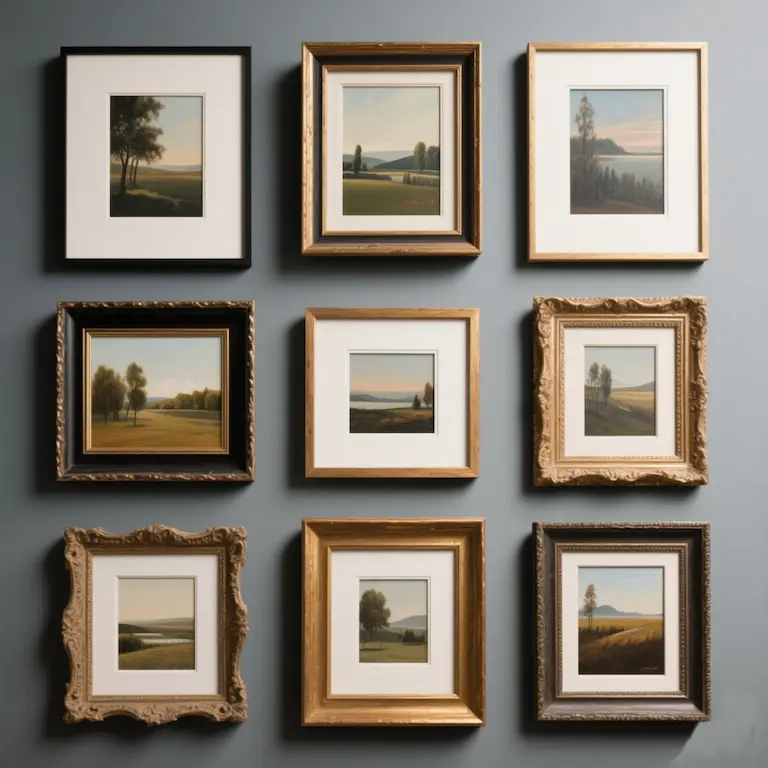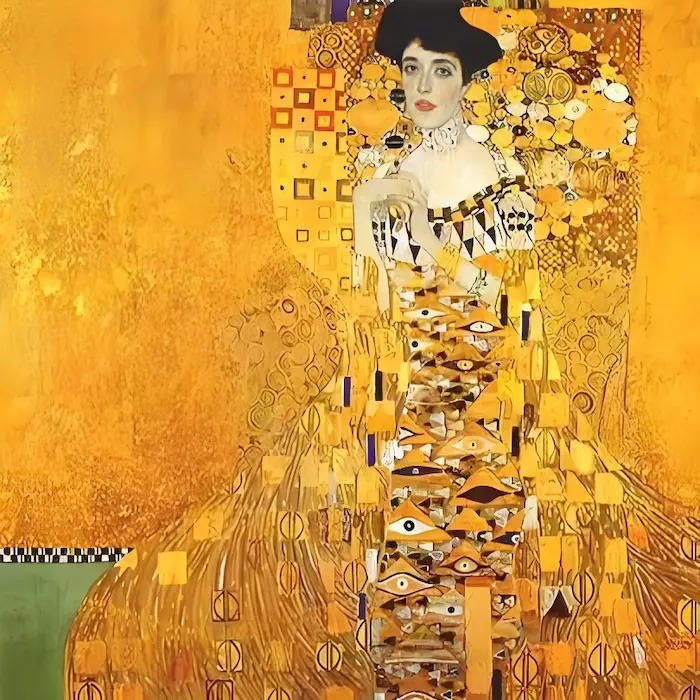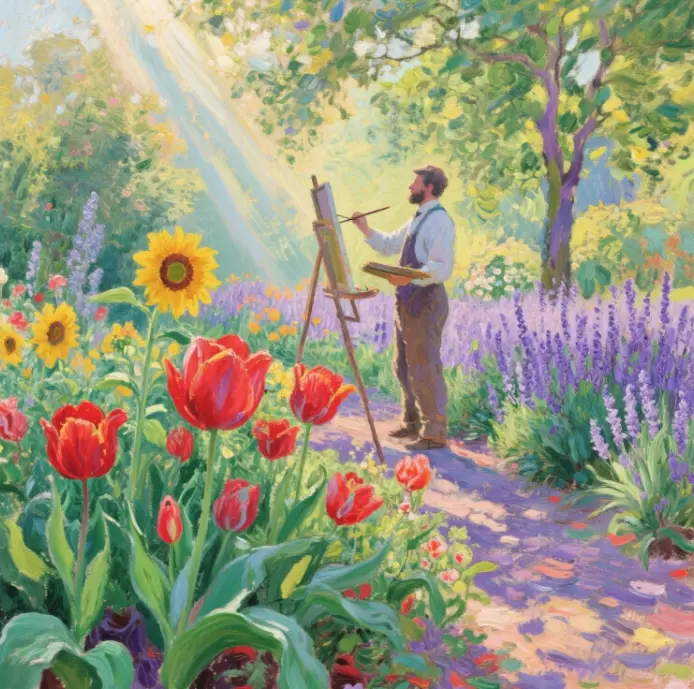Oil painting is a way of painting by using dry oil as a binder, mixing powdered pigment into paste and then applying it on canvas, wooden board or copper plate. It will rely on the oil film slowly oxidation, forming a layer of tough and glossy things, so the painting out of the color is particularly full, the layers are also very rich, but also can be repeatedly modified, many people call it “the king of the species of painting” it. From the 7th century Buddhist frescoes began to try to use it, to later Van Eyck improved the formula, and now there are digital scanning and interactive exhibitions of these new ways of playing, oil painting has always carried our super human pursuit of light, color and emotion.
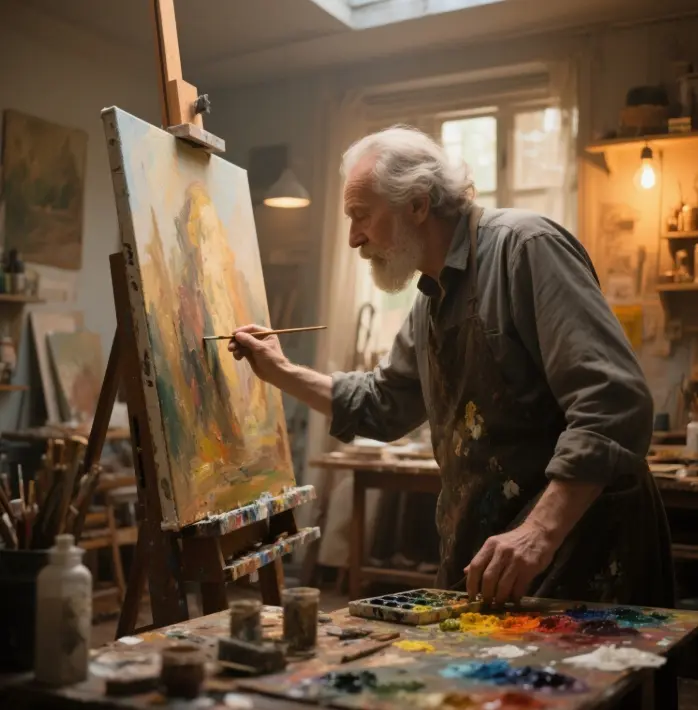
The core concepts and characteristics of oil painting
1. Pigment formula: color powder + dry oil
Oil painting pigment, it is the inorganic or organic color powder and dry oil (such as linseed oil, poppy oil, walnut oil, safflower oil, etc.) are fully ground together into a uniform paste. The toner determines the color and coverage, while the oil controls the flow, sheen, and long-term stability of the pigment. For example, linseed oil, especially high gloss, but may be a little yellowing over time; poppy oil is very clear, but slow drying; walnut oil is better, less yellowing, drying speed is moderate. In the industrial age, with the machine three-roller grinding, the pigment particle size are the same, the color reflection is also more pure. Now some brands will also add lithium aluminum stearate these things, so that the pigment can be used to squeeze out, can be convenient.
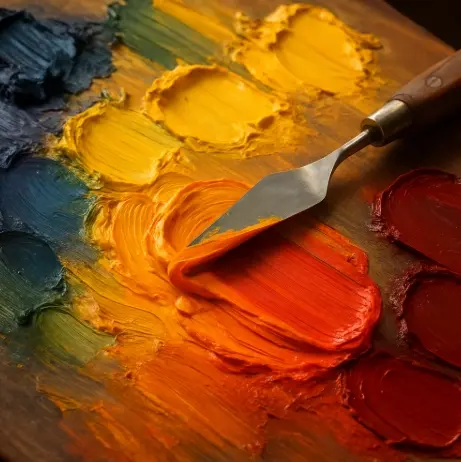
2. Gloss and layering
watercolor paintings rely on the whiteness of the paper, acrylic paintings rely on polymer film, oil painting is different, it relies on “oil film + pigment + air film” can produce particularly complex optical effects. In a painting, the artist can use opaque thick coating method to create that kind of blade-like texture, and also use translucent glaze layer method to superimpose cold and warm colors in the dark places, creating that kind of deep colors that are hard to see with the naked eye. When the light passes through the transparent layer, is reflected back by the base color, and then refracted through the surface layer, when we look at the painting, we will feel as if the painting is glowing from the inside. This kind of layer is much more powerful than the kind of paint that dries after a single application.
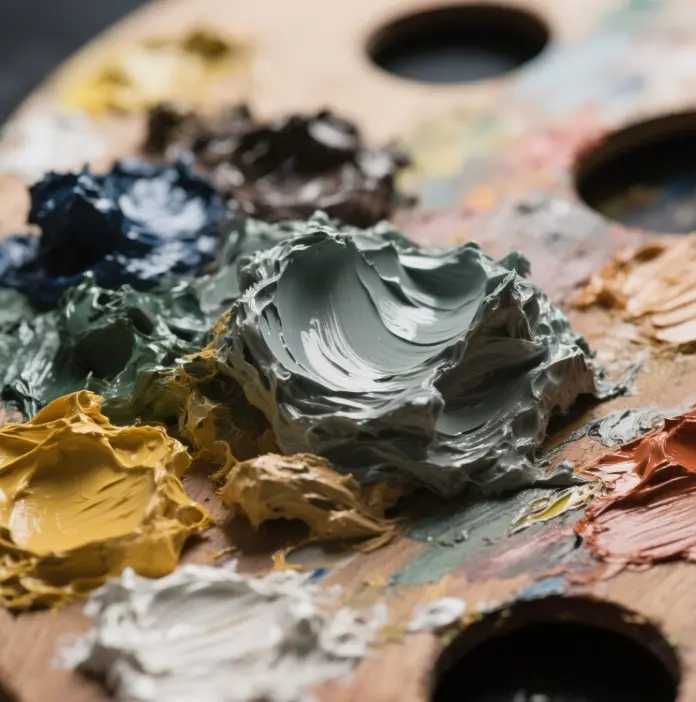
3. Durability and Repairability
The surface of the painting may dry in a few days, but it may take 6-12 months for the painting to be completely dry (that is, the inside of the painting is all polymerized). The advantage of slow drying is that the artist can make changes while painting. Even after a hundred years, the restorer can fix the cracked areas. Like the Mona Lisa, it has been varnished and dewaxed many times, but the core layer of pigment is still intact. As long as the ambient humidity is kept at 45 – 55 % and the sun is kept out of direct sunlight, the painting can be preserved for hundreds of years.
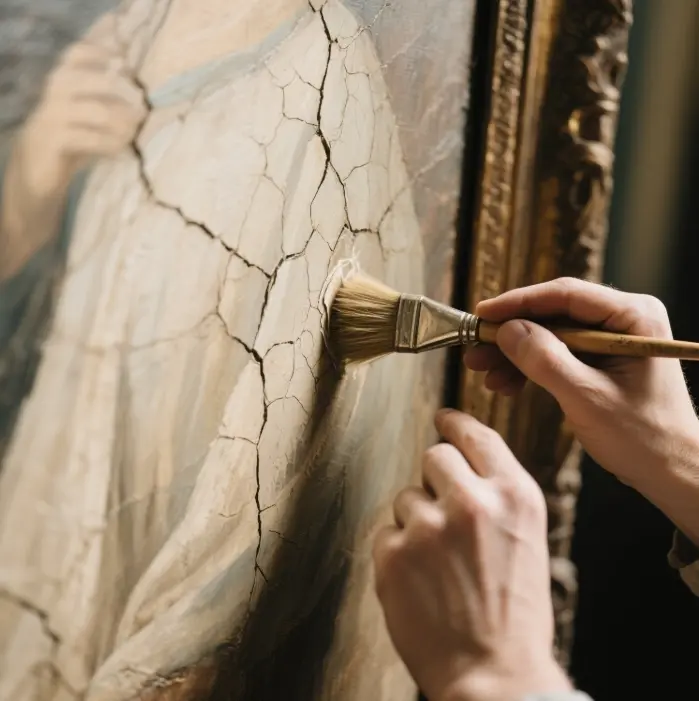
Second, the historical evolution of oil painting
1. Early prototype (7th-13th centuries)
In Afghanistan’s Bamiyan Caves and Egypt’s Fayoum mummy portraits, the use of tempera – oil mixing method, which shows that “painting with oil” in the Silk Road at that time has begun to have it. At that time, the monks used linseed oil to mix the pigment, and added natural resin to make it dry faster, so that the frescoes could withstand the difference in temperature between day and night and would not crack.
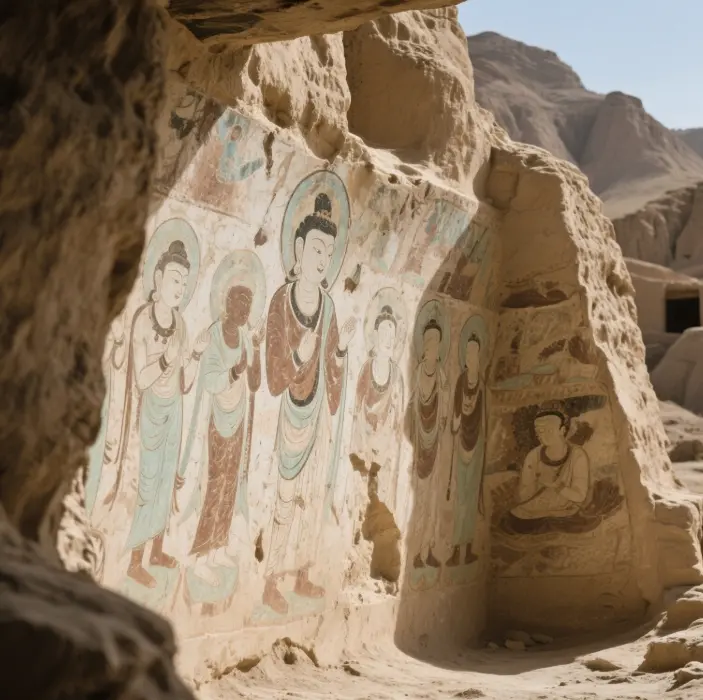
2. The Renaissance and the breakthrough of the Northern School
In the 15th century, there was a Netherlandish painter named Jan van Eyck, who improved the method of “quick-drying tempera base + slow-drying oil overpainting”, so that the paintings were as transparent as gems. Like his painting “The Arnolfini Couple”, the reflection in the mirror and the texture of the velvet, is simply a superb representative of optical layer painting. At this time, Italian painters like Giorgione and Titian changed oil painting from wooden boards to fine-grained canvas, so that in the kind of humid place like Venice, the canvas was light and not easily deformed.

3. Material innovations after the Industrial Revolution
In the 1820s, a man named James Harrington invented the extruded metal paint tube so that painters could go outdoors to sketch. The Impressionists used these broken brushstrokes to capture a moment of light and color, and at the end of the 19th century, zinc-titanium white replaced lead white, which was poisonous, and zinc-titanium white became much safer, and in the 20th century, alkylphenol varnish was introduced, which gave paintings a removable protective coating, and museums were able to maintain paintings for longer periods of time
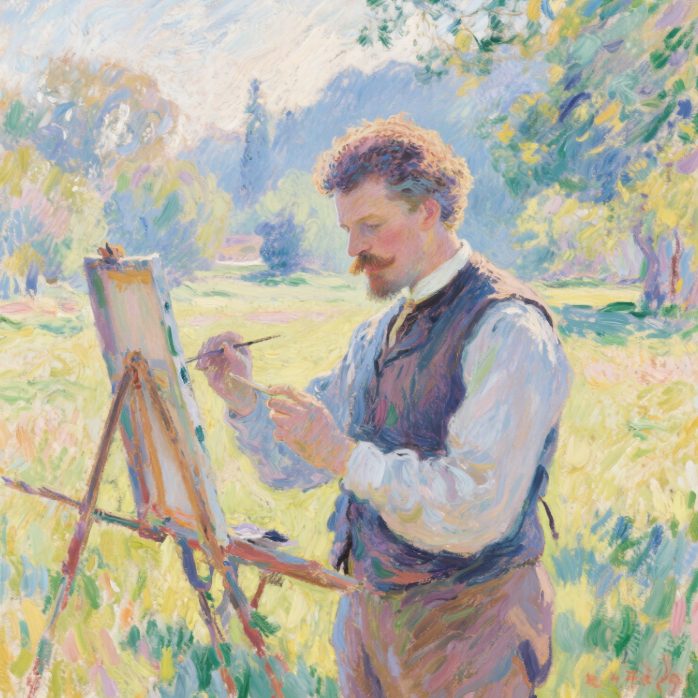
4. Contemporary: Crossing Borders and Digitization
Nowadays, painters are having fun, adding epoxy resins, inkjet paints, and even fluorescent powders to their layers of oil, and Google Arts & Culture has the ability to scan their paintings in ultra-high resolution, so that we can zoom in online and see brushstrokes at a 30-micron scale. There are also new things like NFTs and chained copyright records, which give original paintings new ways of tracing their origins and getting their money’s worth.
Complete list of materials and tools for oil painting
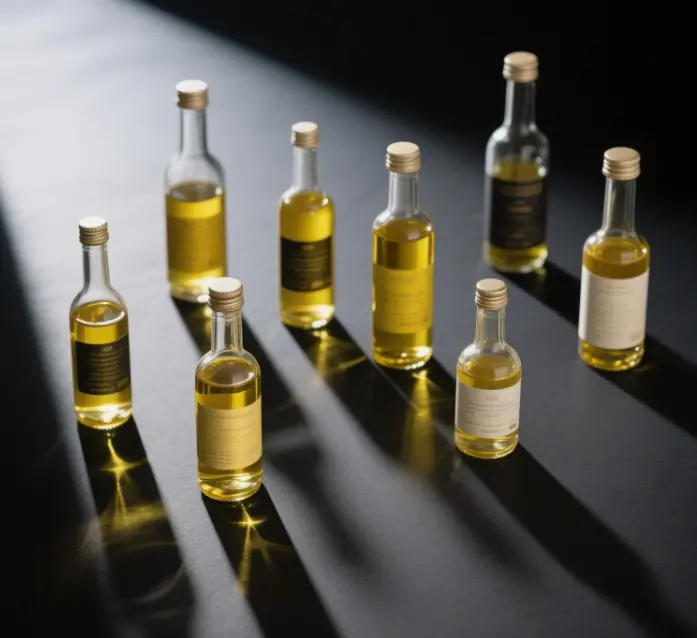
Colors and media
| Functions | Materials | Characteristics | Typical applications |
| Binder | Linseed oil | High gloss, fast drying, yellowish | Universal color mixing |
| Poppy oil | Low yellowing, slow drying | Bright, white layer | |
| Walnut oil | Low acid value, anti-yellowing | Advanced classical techniques | |
| Dilution | Distilled turpentine | Fast evaporating, strong odor | Early thin layer |
| Odorless Mineral Oil | Low odor, slow evaporation | Indoor Safety Painting | |
| Modification | Dammar Resin Varnish | Increase gloss, film brittleness | Varnish or tinting |
| Avocado Paste Polish | Microgloss, reversible | Museum Conservation |

The choicoil painting brushese of canvas
From the past to the present, the support surface used for oil painting is mainly divided into two categories: fabric and hardboard. However, because of the different fibers, substrates, and tensioning methods, each type of support surface can have a great impact on the pigments painted on it!
Linen canvas
Linen fiber has a lot of wax and pectin, can block their own moisture, even in the European coast of the kind of humid and wet place, it is also stable. That kind of high-grade “Belgian Linen”, will use double oil priming (that is, brush two linseed oil base, plus a layer of white lead paste), after drying, it will form a little bit of oil-absorbing “semi-closed” surface. So that the pigment can be firmly adhered to it, but not because the oil seepage too much, so that the picture gray. And the strength of linen fibers, not because of humidity changes, painting long works, its tension can be maintained for a long time, so many museums collect paintings with it.
Duck Cotton
Cotton is inexpensive, the texture is also very uniform, but also easy to stretch, especially suitable for us to start practicing, or want to use a thick coating method of painting. However, cotton fibers tend to swell when exposed to moisture, and when the seasons change, the canvas may become loose and bulge. If the base material used is acrylic gesso, which is highly absorbent of oil, the thick coating may crack due to different stresses. Professional painters usually cross-laminate BEVA Film on the back of the canvas or use aluminum wedges to solve this problem.
Wooden boards
- Poplar / Basswood: the fibers of this wood are straight, so it is easy to carve grooves, and then embedded in the back of the wood, so that the boards are not easy to buckle.
- Tung: Tung is very light and contains little oil, so it is often used in the Orient for painting screens in oils.
- Birch Plywood: Its grain is oriented in several directions, which counteracts the problem of warping. However, it is important to seal the edges and epoxy them to prevent oil and acid from seeping in.
The board is hard and lends itself to glassy overdyeing for painting some particularly fine details. But it can still crack along the annual rings if the temperature and humidity change too much. That’s why it’s recommended to glue two or three strips of maple cross bracing across the back of the board, which will limit its shrinkage.
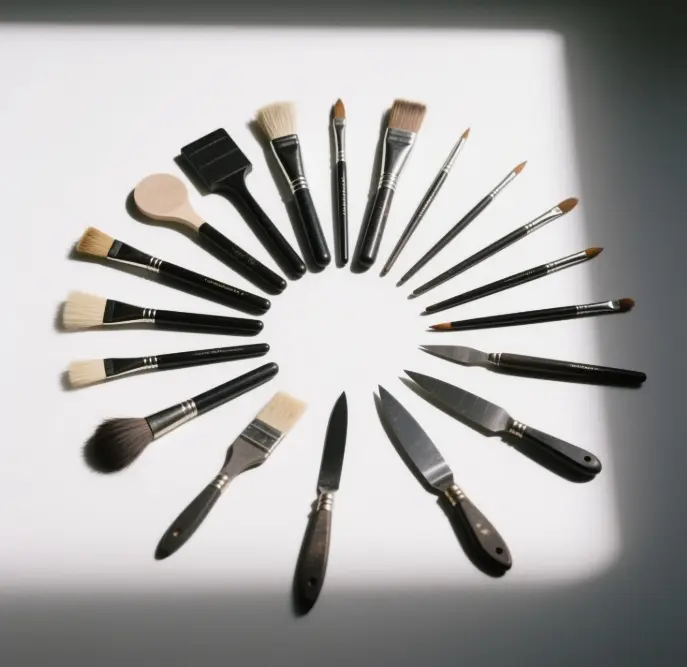
oil painting tools
oil painting brushes
- The pig bristle brushes are very flexible, so they are perfect for thick painting.
- Sable brushes contain less oil, and can soften the edges of the painting in a very natural way.
- Synthetic fiber brushes are not afraid of solvents and are affordable.
Oil Palette Knife
Stainless steel palette knives create sculptural textures, and if you make a mistake, you can scrape the paint off and start over.
Oil Palette
The traditional cherry wood palette absorbs light and makes it easier to judge the depth of the colors when we mix them on it. Glass palettes are easy to clean.
Oil Painting Aids
Gamsol Odorless cleaning canisters and disposable non-woven fabrics are also great aids when painting.
Safety and Environmental Protection
When we paint, it’s a good idea to use low VOC solvents and separate the area where we paint from the area where we clean our tools. You can also put an activated charcoal canister on the desktop to absorb the evaporated smell. Waste solvents can be left to settle, and the clean liquid on top can be used again. Paint residue should be cured and handed over to a place that specializes in handling hazardous waste.
Basic Techniques and Processes for Oil Painting
Priming and Drafting
The classic approach is to apply a coat of rabbit skin glue, which prevents the oils from seeping into the wood, followed by a coat of gesso (plaster dust mortar) to flatten the surface. The gray tone can neutralize the too bright base color, and it will be easier to judge the light and dark when you paint later. When starting, you can use raw ochre turpentine diluted into “turpentine lines”, which dries quickly and does not smudge the colors of the later paintings.
“Fat over Lean” principle
The first layer should be “Lean”, that is, less oil and more solvent, so that the pigment can stick to the canvas very quickly and tightly. Each subsequent layer slowly increases the proportion of oil, and the “Fat” layer is more flexible, so that the canvas will not be cracked because the paint on top dries and shrinks. At the same time, we should also follow the principles of “Thick over Thin” and “Slow over Fast”.
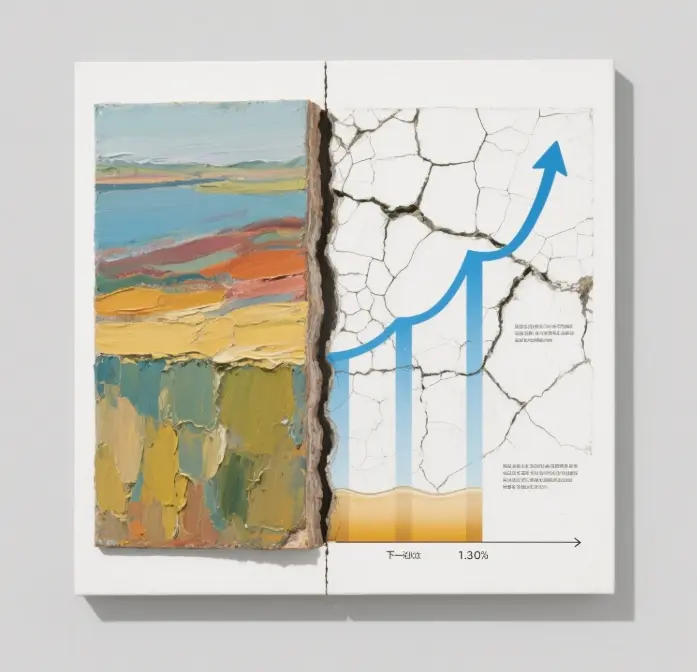
Wet and dry combination and light shaping
- Wet painting wet (Alla Prima): this method is a painting at once, the color blocks can be naturally blended together, especially suitable for the expression of a moment of light and color.
- Layering (Glazing): When the lower layer of paint is dry, use turpentine with a small amount of paint to create a “color filter”, and overlay cool and warm colors on dark areas to create that “airy perspective” feeling.
- Scumbling: Use a dry brush to drag light-colored, semi-dry pigments across high texture areas to create a misty light effect.

Varnishing, Cleaning and Long-term Storage
After painting, leave it for at least three months before applying a thin coat of Damar varnish. After a few decades, if the layer of varnish has turned yellow due to oxidation, it can be softened with an anhydrous ethanol – acetone mixture, then removed in its entirety and a new coat of varnish applied. When restoring professionally, it is important to document the entire process and use materials that are reversible so that the original look of the piece is respected.

Newbie FAQ
How long does it take for an oil painting to dry?
The time it takes for the surface of an oil painting to dry depends on the temperature, humidity and the formula of the paint. Generally speaking, Titanium White dries the fastest, followed by Ultramarine, Cadmium Red and Ivory Black the slowest. At 21 °C / 50 % RH, a thin coat dries in about 3 – 7 days, a thick coat may take several weeks. Complete drying (i.e. when everything inside has been polymerized) takes about 6 months. Don’t glass or seal it until it is completely dry.
What should I buy for my first set of paints?
For the first time, it is enough to buy the seven colors of the “limited palette”, which gives 95% of the color gamut. They are titanium white, ivory black, cadmium red medium, cadmium yellow dark, ultramarine, phthalocyanine green and mature ochre. White, ultramarine and ripe ochre can be adjusted most of the gray tones of skin color, cadmium red and ultramarine mixed together can be adjusted to purple, so that the contrast between warm and cold will have it.
How to control the odor of solvent?
You can choose odorless mineral oil (OMS) or lemon oil, and use a can with a lid to clean the brush. For every 30 square meters of the studio, it is best to have a fan with an air exchange rate of 150 cubic meters per hour or more.
What can I do about cracks?
If the cracks are very small (Pin Crazing), just apply a thin layer of stabilizer.
If it is a large Meandering Craquelure, you will need to reinforce the back of the canvas and then fill in the front of the cracked area with a glaze of the same color. If a historical masterpiece is cracked, be sure to have it repaired by a certified restorer.
Masters and Masterpieces at a Glance
Jan van Eyck, Portrait of Mr. and Mrs. Arnolfini (1434): the reflections of the mirrors and the texture of the fabric in this painting pioneered the method of full-spectrum layering.
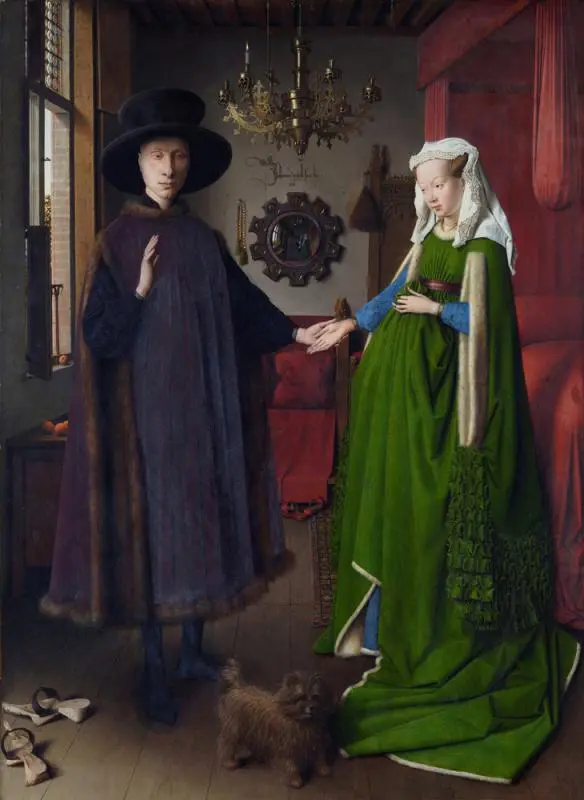
Leonardo da Vinci, Mona Lisa (1503 – 1519): the use of sfumato (smoke) softens the edges exceptionally well, and dozens of layers of translucent overdrawing were used in this painting.

Rembrandt’s “Night Watch” (1642): utilizes the effect of the varnish cracking slightly to give the impression of a flickering candle flame.
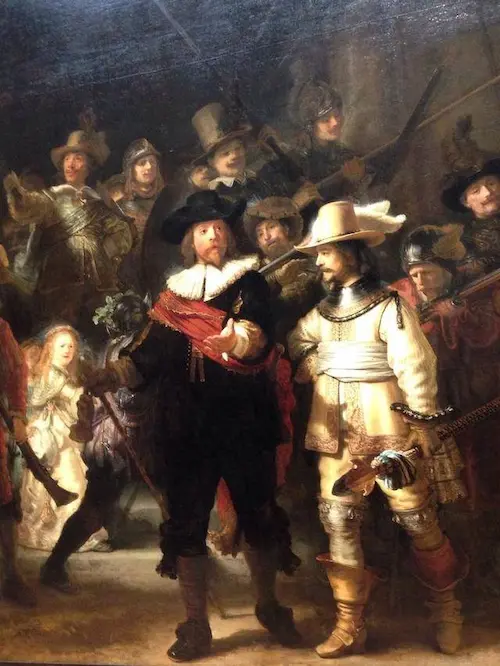
Van Gogh, “Starry Night” (1889): using thick paint, also mixed with beeswax to make the painting look more three-dimensional, and those swirling strokes seem to be able to see the tension in Van Gogh’s heart.
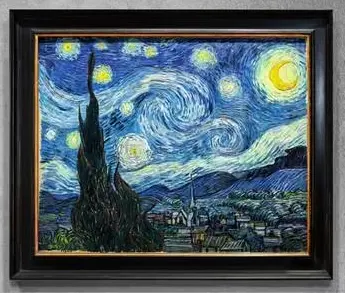
Seven, the modern market and collection value of oil paintings
Auction Quotes
2024 Sotheby’s Oil Paintings and Sculpture Night Sale, the total amount of sales reached 1.69 billion U.S. dollars, even if it is the early small size of the work of the famous artists, the price is often more than the estimated. Because each painting is unique and easy to preserve, oil paintings have always been the investment of choice for top collectors.
Authentication
Infrared Reflectance Scanning (IRR) and X-Ray Fluorescence (XRF) are methods that can tell if a painting has titanium dioxide or optical brighteners, which were not available until after 1940, and this can help us to tell if a painting is a fake.
INSURANCE AND THE ENVIRONMENT
For top quality works, the annual premium is about 0.3 – 0.5 % of the market value. The cost of an exhibition cabinet with constant temperature and humidity is about $300 per square meter per year.
Beginner’s collection
If you’re on a budget, you can buy limited edition Giclée prints, which are pigment-grade inkjet prints on cotton canvas and hand-varnished to retain their color for 70 years or more. You can also focus on 40 x 50 cm originals by emerging artists, which are relatively simple to trace and have a lot of room for appreciation in the future.
This article starts from the definition of “what is oil painting”, and combines the dimensions of oil painting history, material science, technical process, common problems, masterpieces analysis and market collection to provide a systematic and in-depth 360° perspective.
Want to practice more? Check out the “Oil Painting Beginner’s Tool List” now;




